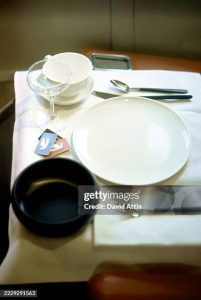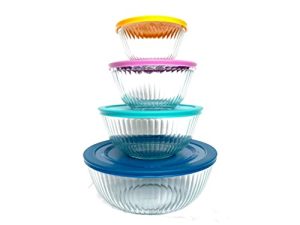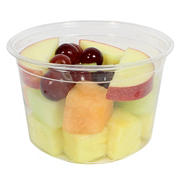Have you ever wanted to add a personal touch to your dinnerware? Imagine turning plain plates and bowls into beautiful, unique pieces that reflect your style.
Painting your own dinnerware is easier than you think, and it’s a fun way to make every meal feel special. In this guide, you’ll discover simple steps and expert tips to help you create stunning designs that last. Ready to transform your dinnerware and impress your guests?
Let’s get started!
Choosing The Right Dinnerware
Painting dinnerware can be a fun way to create unique dishes. Picking the right dinnerware is important before you start painting.
Not all dinnerware works well with paint. Choosing the right type helps your design last longer and look better.
Selecting Suitable Materials
Some materials hold paint better than others. Porcelain and ceramic are popular choices because they have smooth surfaces.
Glass can also work but needs special paint. Avoid plastic or metal since paint may peel or not stick well.
- Ceramic: smooth surface, easy to paint
- Porcelain: durable and paints well
- Glass: needs special paint and preparation
- Plastic: not good for painting
- Metal: paint may peel off
Picking The Perfect Shapes And Sizes
Simple shapes are easier to paint. Flat surfaces give more space for your design.
Small plates or cups may be harder to decorate. Choose sizes you feel comfortable painting on.
- Flat plates: best for detailed designs
- Bowls: curved, harder to paint evenly
- Cups and mugs: small area, need careful work
- Large platters: more space for big designs

Credit: www.youtube.com
Gathering Essential Supplies
Painting dinnerware is a fun way to create unique kitchen pieces. Before you start, you need the right supplies. These will help you get good results and keep your work safe.
This guide covers the main supplies you need. We will look at paint types, brushes, and safety gear.
Types Of Paints For Dinnerware
Choose paints made for ceramics or glass. These paints stick well and can handle washing. Acrylic paints are common but must be sealed. Porcelain and enamel paints are best for durability.
- Porcelain paint: lasts long and is dishwasher safe
- Enamel paint: strong and glossy finish
- Acrylic paint: easy to use but needs sealing
- Oil-based paint: durable but slow drying
Brushes And Painting Tools
Use brushes that hold paint well and give smooth lines. Soft synthetic brushes work great. You might also need sponges or fine-tip markers for details.
| Tool | Use | Tip |
| Flat brush | Cover large areas | Choose soft bristles |
| Round brush | Detail work | Small size for fine lines |
| Sponge | Texture effects | Dab gently |
| Fine-tip marker | Outlines and writing | Use ceramic-safe ink |
Protective Gear And Workspace Setup
Keep your area clean and safe. Wear gloves and an apron to protect skin and clothes. Cover your workspace with newspaper or plastic sheets.
- Use gloves to avoid paint on hands
- Wear an apron to protect clothes
- Cover table with disposable sheets
- Work in a well-ventilated room
- Keep water and paper towels nearby
Preparing Your Dinnerware
Painting dinnerware can give old plates a fresh, new look. Preparation is key for long-lasting results.
Properly cleaning and priming your plates ensures the paint sticks well and lasts longer.
Cleaning And Drying Plates
Start by washing your dinnerware with warm water and mild soap. Remove all dirt, grease, and dust.
- Use a soft sponge to avoid scratching the surface.
- Rinse thoroughly to remove soap residue.
- Dry the plates completely with a clean towel.
- Let plates air dry for at least 30 minutes before painting.
Sanding And Priming Surfaces
Lightly sand the surface of your dinnerware to help the primer and paint stick better. Use fine-grit sandpaper.
| Tool | Purpose |
| Fine-grit sandpaper (220-320) | Roughen surface slightly |
| Primer suitable for ceramics | Prepare surface for paint |
| Clean cloth | Remove dust after sanding |
After sanding, wipe away dust with a clean cloth. Then apply a thin, even coat of primer. Let it dry fully before painting.
Painting Techniques For Dinnerware
Painting dinnerware is a fun way to add personal style to your kitchen. You can use many different painting techniques to create beautiful designs.
Choosing the right technique helps you make your dinnerware look unique and stylish. Below are some easy ways to start painting your plates and cups.
Basic Brush Strokes
Basic brush strokes are the foundation of painting on dinnerware. They help you cover the surface evenly and create simple patterns.
Use soft brushes and steady hands for smooth lines. Practice different strokes like dots, lines, and swirls to see what you like.
- Use a flat brush for broad strokes
- A round brush works well for details
- Try short, quick strokes for texture
- Use long, smooth strokes for clean lines
Using Stencils And Patterns
Stencils help you paint clear shapes and patterns on your dinnerware. They make it easy to repeat designs without mistakes.
Choose stencils with simple shapes or buy ready-made patterns. Place the stencil firmly on the surface before painting.
- Secure the stencil with tape to avoid slipping
- Use a sponge or brush to dab paint gently
- Remove stencil carefully before paint dries
- Layer colors for a more complex look
Creating Unique Designs
Unique designs show your creativity on dinnerware. Combine colors, shapes, and textures to make one-of-a-kind pieces.
Try freehand drawing or mix different painting tools. Experiment with dots, stripes, and splashes to find your style.
- Mix bright and pastel colors for contrast
- Use toothpicks or cotton swabs for small details
- Try layering paint for a 3D effect
- Draw simple shapes like hearts or stars
Curing And Sealing Your Artwork
After painting your dinnerware, you need to cure and seal your artwork. This process makes your design last longer and stay vibrant.
Proper curing and sealing protect your painted dishes from chips, fading, and washing damage.
Drying Times And Methods
Let your painted dinnerware dry completely before curing. Drying time depends on paint type and thickness.
Air drying is common. Place items in a dust-free area for 24 to 48 hours. Avoid touching the paint during this time.
- Thin layers dry faster than thick layers.
- Keep pieces away from direct sunlight to prevent cracking.
- Use a fan to speed drying if needed, but avoid dust.
Baking For Durability
Baking your painted dinnerware makes the paint hard and durable. Most ceramic paints need heat to cure properly.
Follow paint instructions for baking temperature and time. Usually, bake at 300°F to 350°F for 30 to 45 minutes.
- Place items in a cold oven and then heat to avoid cracks.
- Let the oven cool down completely before removing pieces.
- Do not wash dinnerware for at least 7 days after baking.
Applying Sealants For Protection
Sealants add a protective layer over your paint. This helps prevent scratches and fading.
Choose a food-safe, clear sealant suitable for ceramics. Apply thin, even coats following the product instructions.
- Use a brush or spray sealant for even coverage.
- Allow sealant to dry fully before using the dinnerware.
- Reapply sealant every few months for extra protection.

Credit: classbento.com.au
Maintaining Painted Dinnerware
Painted dinnerware adds a special touch to your table. Proper care helps keep the paint bright and lasting. Understanding how to clean and handle your painted dishes is important.
This guide focuses on simple ways to keep your painted dinnerware looking new. Follow these tips to avoid damage and preserve your artwork.
Cleaning Tips To Preserve Paint
Cleaning painted dinnerware requires a gentle touch. Avoid harsh chemicals and rough scrubbing to protect the paint. Use mild soap and soft cloths or sponges.
- Wash by hand with warm water and gentle dish soap.
- Use a soft sponge or cloth, not abrasive scrubbers.
- Do not soak painted dishes for long periods.
- Dry with a soft towel instead of air drying.
- Avoid dishwashers unless the paint is sealed and dishwasher safe.
Avoiding Common Damages
Painted dinnerware can chip or fade if not handled carefully. Follow these precautions to prevent damage during everyday use.
| Damage Type | Cause | Prevention |
| Chipping | Dropping or bumping | Handle with care, avoid stacking tightly |
| Fading | Harsh detergents or hot water | Use mild soap and lukewarm water |
| Scratches | Abrasive cleaning tools | Use soft cloths and sponges only |
| Peeling Paint | Dishwasher use or soaking | Hand wash and dry promptly |
Creative Ideas To Try
Painting dinnerware lets you add a personal touch to your table. You can create designs that fit any occasion or style. This guide shows creative ideas to inspire your next project.
Try different themes and techniques to make unique pieces. Use colors, patterns, and textures to express your creativity. Here are some ideas to get started.
Seasonal Themes
Choose colors and motifs that match the seasons. Seasonal dinnerware adds charm to your meals and celebrations. You can paint flowers for spring or leaves for fall.
- Spring: pastel flowers, birds, and butterflies
- Summer: bright fruits, sunshine, and beach scenes
- Fall: pumpkins, falling leaves, and warm tones
- Winter: snowflakes, pine trees, and cool blues
Personalized Gifts
Hand-painted dinnerware makes thoughtful gifts. Add names, dates, or special messages to make each piece unique. This shows care and creativity.
| Gift Idea | Design Suggestion | Occasion |
| Monogrammed Plate | Initials in elegant script | Wedding or Anniversary |
| Family Name Mug | Last name with floral border | Housewarming |
| Custom Message Bowl | Short quote or inside joke | Birthday or Holiday |
Mixing Colors And Textures
Combine different colors and textures for eye-catching dinnerware. Use matte and glossy paints or add raised designs. Mixing styles makes each piece special.
- Use complementary colors like blue and orange for contrast.
- Try sponging or splattering paint for texture.
- Add dots or stripes with a fine brush for detail.
- Mix smooth and rough finishes using varnishes or glazes.
Credit: www.lemon8-app.com
Frequently Asked Questions
What Materials Do I Need To Paint Dinnerware?
You need ceramic paint, clean brushes, rubbing alcohol, and sealant. Ensure your dinnerware is dishwasher-safe for best results. Proper materials guarantee durable and vibrant designs.
How Do I Prepare Dinnerware For Painting?
Clean the surface with rubbing alcohol to remove grease and dirt. Avoid soap as it leaves residues. Dry completely before painting to ensure paint adheres well.
Can I Use Regular Paint On Dinnerware?
No, regular paint is not suitable. Use non-toxic, food-safe ceramic or porcelain paint. This prevents harmful chemicals from contaminating your food and ensures durability.
How Long Does Painted Dinnerware Take To Cure?
Typically, painted dinnerware cures within 24 to 72 hours. Some paints require baking in the oven for extra durability. Follow the paint manufacturer’s instructions for best results.
Conclusion
Painting dinnerware brings personal style to your table. Choose the right paint and tools for best results. Clean the surface well before starting your design. Take your time and apply paint in thin layers. Let each layer dry fully to avoid smudges.
Seal your work with a safe finish for durability. Enjoy your unique, hand-painted dishes at every meal. This simple craft adds charm and joy to dining. Give it a try and see the difference!





